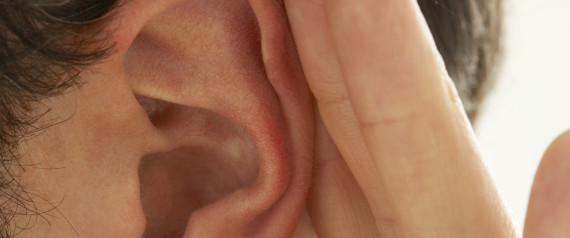
In an advance that promises to improve the lives of the more than 250,000 people in the United States who are paralyzed from the neck down, researchers announced on Wednesday that they have developed a wireless device that operates specially rigged chairs by means of a tiny titanium barbell pierced through the tongue.
Merely by moving their tongues left or right across their mouths, essentially using it as a joystick, paralyzed patients have been able to move their motorized wheelchairs, as well as computer cursors. Tapping tongue against cheek, quickly or slowly, controls the chair’s speed.
The advance “is more than just a wheelchair control,” said Jason Disanto, 39, who has been paralyzed from the neck down since a 2009 diving accident and tested the device. “It’s an independence system.”
The innovation is especially meaningful for the most seriously paralyzed. Tetraplegics cannot use a joystick to operate their wheelchairs, as people with less severe paralysis can, and in many cases cannot even use voice commands: their voices are often so weak that recognition systems work poorly or not at all.
Even more advanced assistive technologies fall short. Brain-computer interfaces (BCIs), which translate brain waves from the scalp into electrical signals that move a motorized wheelchair or computer cursor, require intense concentration, have slow response times and are vulnerable to electronic interference. The implantable versions are more reliable but can damage brain tissue.
The most popular technology for operating a motorized wheelchair, called sip-and-puff devices and based on inhaling or exhaling into a tube, offers only four commands – forward, back, left and right—and is also slow and cumbersome.
Way faster, way more agency
Engineer Maysam Ghovanloo of the Georgia Institute of Technology in Atlanta thought he could do better. About five years ago he and his colleagues began developing the tongue-based system. An early version used magnets glued to the tongue, but they fell off. Dr Anne Laumann of the Feinberg School of Medicine at Northwestern University, a co-author of the new paper, had an idea: use piercing to anchor the magnets in place.
The device they came up with is a small magnetic barbell, which creates a magnetic field in the mouth. When users flick their tongues, it alters that field. The change is picked up by four small sensors on a headset with twin extensions curving around the cheeks, and relayed wirelessly to a smart phone, computer or iPod. The software translates the signals and sends them to a powered wheelchair or computer.
For the new study, published in Science Translational Medicine, Ghovanloo and his team tested the tongue system on 11 tetraplegia patients from rehabilitation centers in Chicago and Atlanta and 23 able-bodied volunteers who already wore tongue jewelry.
After just 30 minutes of training, everyone was able to move a computer cursor, clicking on targets on a laptop screen, playing video games and dialing phone numbers. Accuracy and speed improved with practice, even though subjects used the system only one day a week. After six weeks the tetraplegics were, on average, three times faster with the tongue system than with sip-and-puff, which six of the 11 (including Disanto) had been using. It was equally accurate.
Using only tongue movements, the volunteers also navigated a powered wheelchair through a 50-meter-long course with 13 turns, 24 obstacles and occasional alarms signaling “Stop! Emergency!” Here, too, on average the 11 tetraplegics drove the course three times faster with the tongue system than with sip-and-puff, and just as accurately.
“The learning was very, very fast,” Ghovanloo said. “There was a huge improvement in performance from the first session to the second.”
To Disanto, an electrical engineer, the appeal of the system is aesthetic as well as functional.
“With all the equipment that’s in my face” with the sip-and-puff system, “people saw that and not me,” he said.
The tongue system is a vast improvement, but he encouraged the researchers to go even further, and they have: they are developing a version that dispenses with the headset and instead fits inside the mouth, like a retainer.
The tongue system’s ability to operate numerous devices also promises more agency, Disanto said. He currently uses a voice-recognition system and a “head mouse” (an optical sensor that translates head movements into cursor movements) to use his computer, “but this is going to allow people like me to use one system instead of multiple ones,” he said. “I’ll be able to drive my wheelchair and connect to my computer seamlessly, and eventually connect to home devices, using it to work lights, curtains, TV and heat. I’ll be more independent.”
Those home systems already exist, with many smartphones offering apps that control home appliances, lights and heating-and-cooling systems.
“This is another example of how the field of rehab engineering and assistive devices is continuously evolving and benefiting from incorporating the emerging new technologies,” said Dr Daofen Chen, program director at the National Institute of Neurological Disorders and Stroke, part of the National Institutes of Health.
The researchers plan to test the tongue system “using Atlanta as our laboratory,” said Joy Bruce, manager of spinal cord injury at the Shepherd Center, a rehab center in Atlanta where the study was conducted. “We’ll see if patients can use it to navigate in the community – taking the bus, going to work and doing other things they haven’t been able to.”
Ghovanloo’s startup company, Bionic Sciences, is working with Georgia Tech to commercialize the barbell device. The $1 million he got from the 2009 economic stimulus bill is gone, and government science funding has plummeted, so Georgia Tech is setting up a website and planning to use social media to raise money. If Ghovanloo gets the funds, he hopes to test the system in the streets of Atlanta next year
Source: GMA News




 Noting that about one million deaf children in the country are in need of modern medical treatment like cochlear implantation, Union Environment Minister Jayanthi Natarajan today said a holistic effort by government, medical fraternity and others would help in propagating the technology for the benefit of such kids.
Noting that about one million deaf children in the country are in need of modern medical treatment like cochlear implantation, Union Environment Minister Jayanthi Natarajan today said a holistic effort by government, medical fraternity and others would help in propagating the technology for the benefit of such kids.




